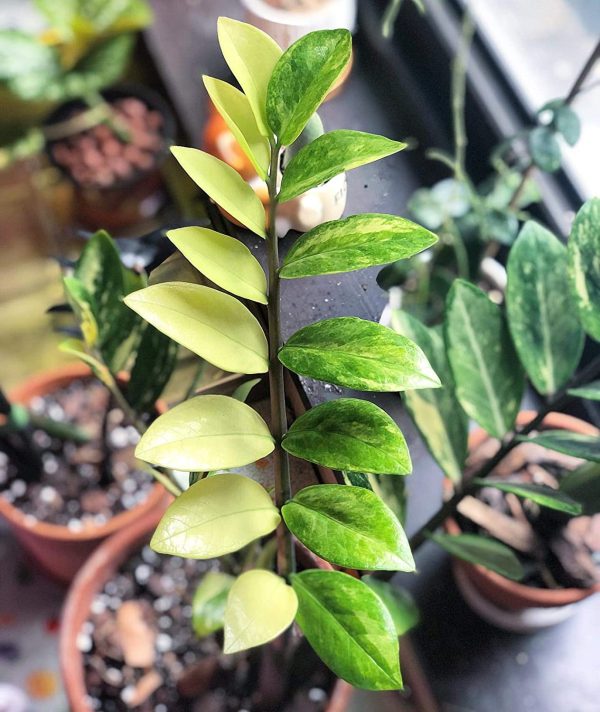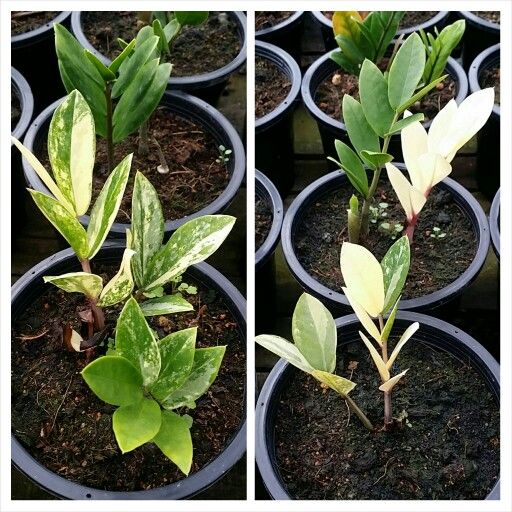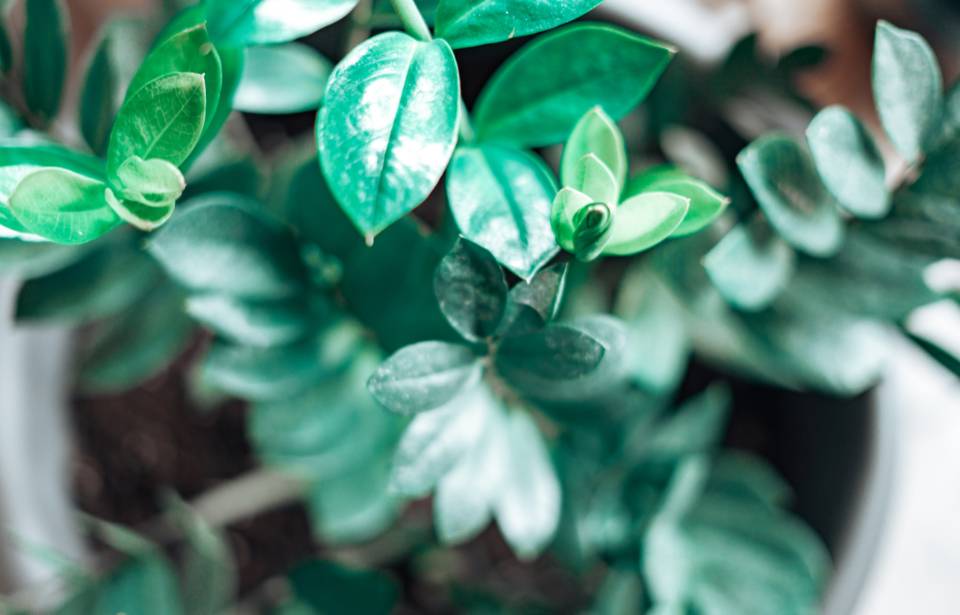To the flairs! Gardening’s Core decided to make your garden more enriched with different plant types. Do you think the variety of plants in your garden would look dramatic but make your garden care a bit hard? Well, no. Most of the plants just need the right patch to cope. Following this, Gardening’s Core has brought an overview of a dynamic plant type. And that is a Variegated ZZ plant.
No doubt, this plant got a stunning appearance with its beautifully arranged, upright, angled, and oblate shape leaves. Not finished yet. The leaves have a mix combo of dark, light green, and yellow! So, it steals the eye of any green-loving person. In a small Boho pot, plant the Variegated ZZ plant, and you are good to go. So, the variegated ZZ plant is like the rated package of decorative indoor greenery.
What is the history of the Variegated ZZ plant? How do you rear them? And what are the ingredients to make the Variegated ZZ plant a happy one? To get these answers just roll your eyes down. Common!

Back to the Beginning
The Variegated ZZ plants originated from South Africa and Kenya. Zanzibar Gem is another name for the variegated ZZ plant. These plants belong to the houseplant type and belong to the Araceae family. Like the Araceae family plants, variegated ZZ plants have bifacial leaves, and small flowers and the plant habitat would be herbs.
It is also a great indoor plant to offset air pollutants. You can check out the 10 best indoor plants. Like them, the Variegated ZZ plants filter out benzene, ethylbenzene, and other toxic air pollutants. The scientific name of this amazing indoor plant is Zamioculas zamiifolia. These houseplants are…
- Evergreen Houseplants.
- The leaves arrangement style is pinnate, and the leaves are 10-15 inches long.
- The plant is long enough and reaches up to 20 inches/ more.
- It has a succulent-type rhizome.
- The Variegated ZZ plants have nice yellow, cream, brown flowers. No smell and these flowers appear in the fall, summer and other seasons.
However, you can have this long-lasting variegated ZZ plant with low maintenance.
What variegated ZZ plants love?
So, what type of combinations are best suited? Let’s see the soil type, water requirements, light, and other necessities for the ZZ plants. Here we begin…
Soil
The USDA growing zones 9, 10, and 11 are suitable for the ZZ plants. These are some sorts of succulents. So, you can use perlite, cactus potting mix, and other airy potting mixes to feed these beautiful indoor plants. The variegated ZZ plants love a soil medium that is not soggy. Of course, the potting soil should be porous and well-drained. You can have a gross calculation. For example, 1% all-purpose soil, 2% perlite, and 2% sandy, loose soil.
Water
Well, as mentioned before, the variegated ZZ plants do not love wet feet. As a houseplant, you can water the variegated ZZ plants in 2-3 weeks intervals. Overwatering is just what this succulent indoor green hates. Due to overwatering, the ZZ plants’ leaves will turn yellow and the stems will start rotting.
So, don’t feed too much water. But in dry, sunny seasons, the variegated ZZ plants will require more water. Try to water these houseplants within 10-12 days. So, the plants can retain moisture and store it for their purpose. No doubt, it is a drought-tolerant indoor plant.
Humidity
The variegated ZZ plants are home plants so according to this they can survive in a humid environment. At least 40-50% humidity is okay for your green ZZ plants. These Aracaea plants are semi-succulent and love the tropical vibe. So, the ZZ plants love moisture around them.
Temperature
Your inside room temperature is okay for your variegated ZZ plants. Around 18-30 degrees Celsius temperature is prevailing for the variegated ZZ plants. These plants won’t crave too much or too low temperature. Your variegated ZZ plants won’t love the frost and low temperatures like 10-15 degrees Celsius. So, don’t put your ZZ plants in trouble. If they are outdoors while winter, bring them home immediately and keep them in a warm environment.
Fertilizer
Extra effort is not for the variegated ZZ plants. You can use your regular fertilizer in the potting mix. Use the manure, home fertilizer, worm cast, etc to make the plant happy. They are not heavy feeders. So, you don’t need to put a lot of fertilizer like the fruit/flower plants. Keep it simple. Add half of the fertilizer like 1/4 or 1/6 portion in a potting mix and ZZ plants are good to go with it.
light
The variegated ZZ plants love the indirect bright sun exposure. At least 6-7 hours of sunlight is a must for your Variegated ZZ plants. In the summer days, it might cope with 7-8 hours of sunlight daily. But the sunlight should be in medium-bright passive sunlight. Your green Variegated ZZ plants don’t love the sun kiss at all.
So, above are the basic needs of your variegated ZZ plants. As a green enthusiast, you must keep these things on the same page for the flourishing ZZ plants.
How to take care of the Variegated ZZ plants?

Now let’s see how you can expand the little variegated ZZ plants. There are couple of way to do that and how to take care of them…
Pruning…It can also be a great option to increase your plant growth. How? You must take off your plant’s yellow leaves, stalk, and old stems to make it a better version.
Propagation
The propagation of variegated ZZ plants can be done in several ways like stem cutting, leaflet cutting, water propagation, and so on. In the case of Stem cutting just take the stem from your regular growing plant. Make sure your cut stem has some leaves and is overall in healthy condition. Then place it in your regular flowerpot and water it regularly in the early stages. After 2-3 weeks, you will see the growth of your plants and they become lively as your other plants. So, stem cutting is a very popular technique to make a huge collection of your current indoor ZZ plants.
Another interesting way is leaflet cutting. This interesting houseplant can replenish through the fallen leaves. Don’t be shocked… Just take off some healthy ZZ leaflets and re-pot them in the potting soil. Follow the same rules for stem propagation. But in terms of the leaflet growth, the new variegated ZZ plant development will be slow and steady. But don’t worry, in both stem and leaflet propagation try to use the best aerated potting soil, water regularly and the best fertilizer.
Common Problems in Variegated ZZ plants
In terms of these houseplants, if you overtake care of them, then your plants can give you some indicators. So, let’s count some of the major problems you can face in your variegated ZZ plants…
Yellow leaves: Due to overwatering, the ZZ plants can turn yellow. Overhead watering and direct sunlight can also give you yellow leaves.
The brown tips: Again, a watering problem. Due to less water, these super succulents can indicate you with the brown tips in leaves. Low humidity can also be the reason for your brown leaves.
Root rotting: It can happen for any reason, due to overfertilizing, or overwatering it can happen.
In general, the mealybug leaves curling, then other root bulb issues you can commonly find.
FAQ
So, let’s explore some FAQs from other thinking tanks…
Are variegated ZZ plants stable?
These indoor plants can grow tall and healthy. You can find these plants very rigid and strong in your home garden. Dark yellow, creamy green leaves, and healthy stems are signs of stableness.
What is the lifespan of your ZZ plants?
The variegated ZZ plants can live up to 7-10 years if you take great care of them. Moreover, the leaves can stay on the plants for 4-5 months. So, these indoor plants can keep your house decorative for many years!
Why does variegation disappear?
Due to sunlight deficiency, the variegation can go away! The variegated ZZ plants can find this variegation seasonal. Because the variegated parts are not producing any food. Under these circumstances, and in low light, the variegated zones will turn into regular green parts. So, shower your ZZ houseplants with more light for more variety.
Should I mist my ZZ plants?
Why not? The variegated ZZ plants love the humid air. So, if the temperature declines and your home humidity is less, just spraying some water around your ZZ plants pot/leaves. I will help them to stay moist. Though they are drought tolerant, but ZZ plants loves more humidity.
Summary
Now that you know everything about the variegated ZZ plants, you can surely bloom your window corner, bathroom corner, and living room with these variegated plants. Usually, nurturing these greens is effortless. Hence, make your way to the nearest garden center, collect the variegated ZZ plants, and enjoy your indoor gardening at another level. And yes keep your garden upgraded with Gardening’s Core…

